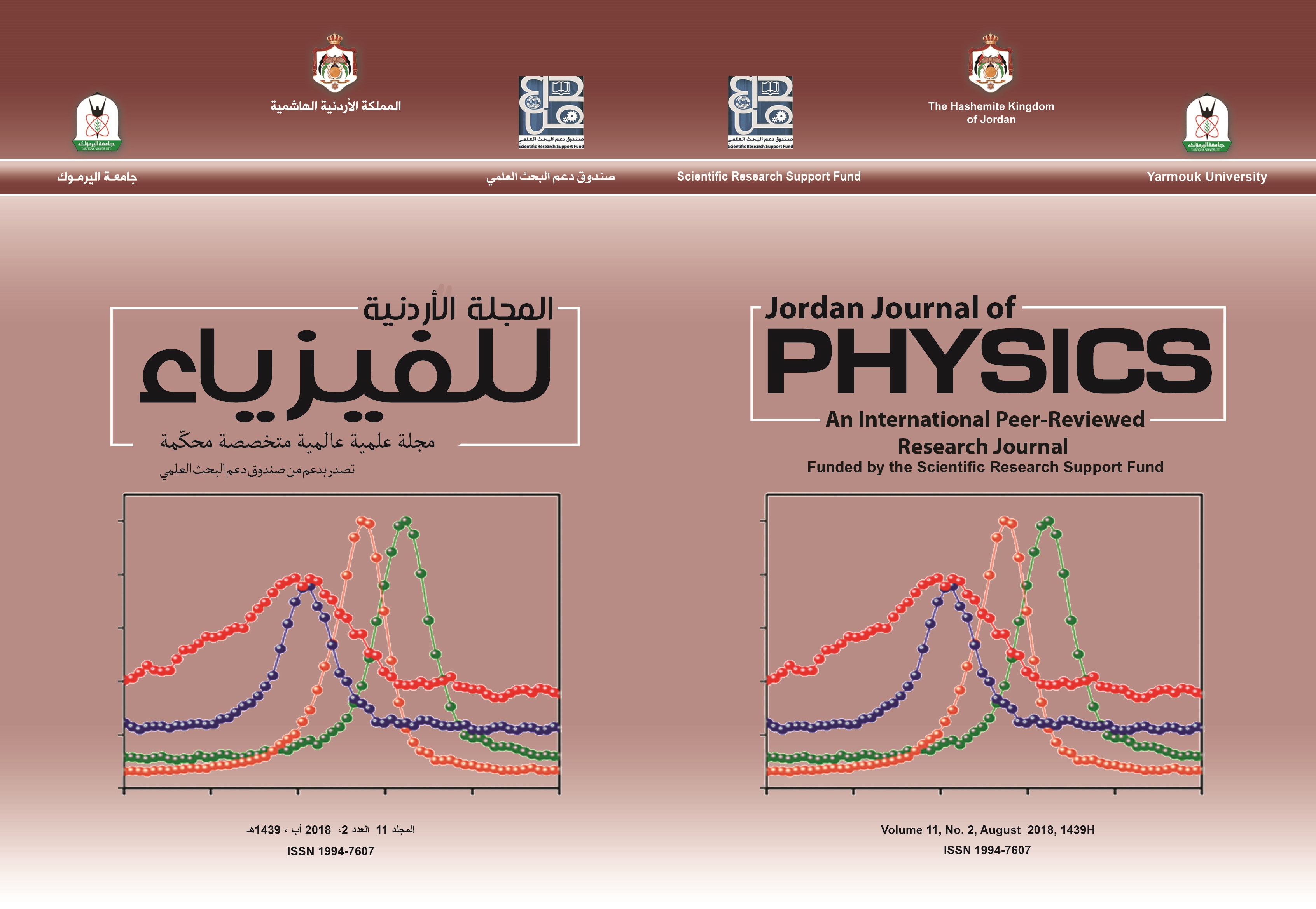Radiological Risk Measurements Due to Natural Radioactivity of Building Stones Used in Jordanian Houses
Abstract
The radiological risk from building stone interfaces in Jordanian houses was determined depending on gamma ray spectrometric techniques. Building stone samples collected from seven types mostly used in Jordanian houses have been analyzed for the naturally occurring radioactive radionuclides. The mean specific activities of 238U, 232Th and 40K were lower than 7.63±0.08, 2.77±0.12, 32.7±2.96Bq/kg, respectively. The estimated radium equivalent activity (Raeq) in the stones was lower than 24.84±0.470 Bq/kg and the external and indoor hazard indices were also lower than unity. Moreover, different radiological hazardous parameters (The absorbed dose, the annual effective dose equivalent, annual gonadal dose equivalent (AGDE), Excess Lifetime Cancer Risk ELCR, and activity utilization index (AUI)) were calculated. The results were lower than those of published world average values. Also, the obtained values were comparable with the reported data of other building materials used in Jordan.
Keywords: Natural radioactivity, Gamma-ray spectrometry, Building stones, Hazard indices, Activity utilization index, Radiological risk.


